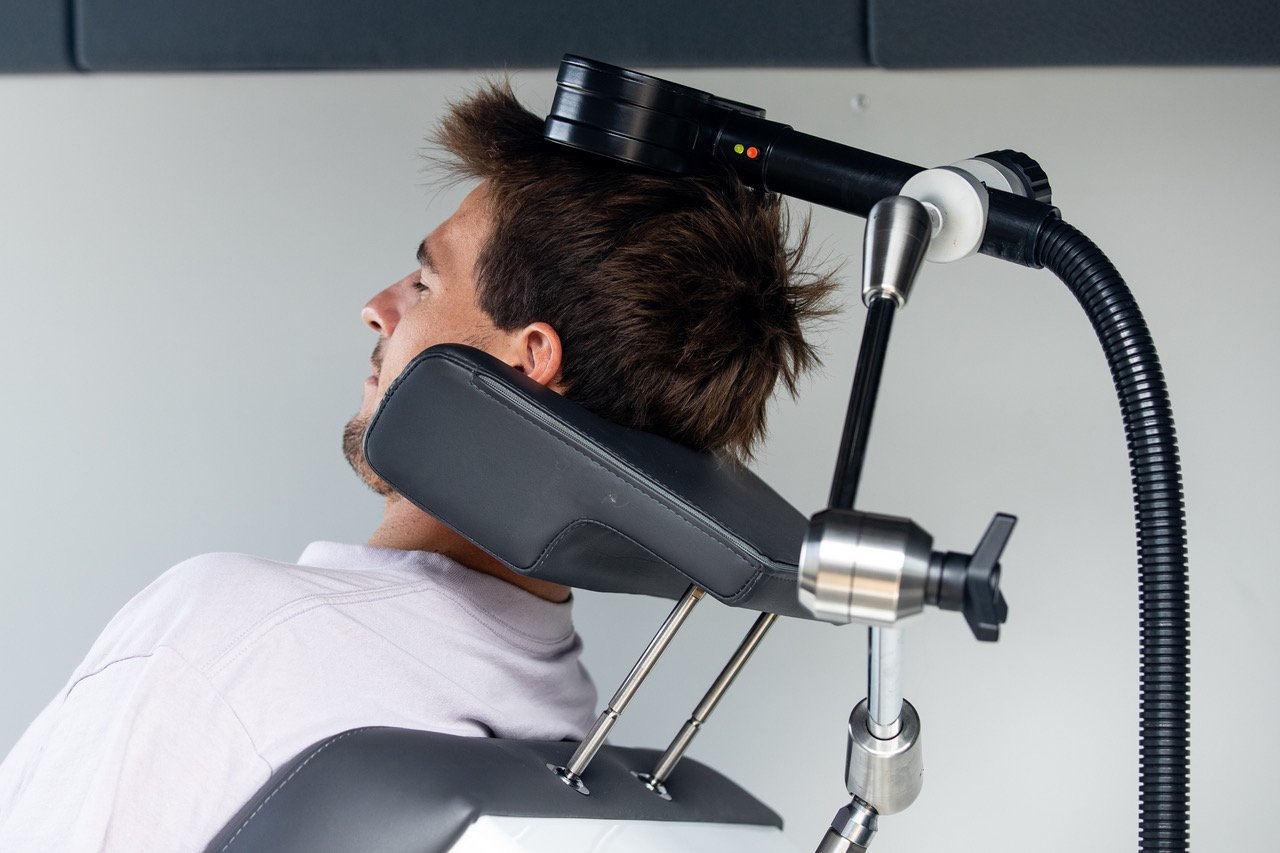Transcranial Magnetic Stimulation (TMS)
TMS is a procedure that uses magnetic fields to stimulate nerve cells in the brain after a specialized EEG maps deficits within the brain. There are several subtypes of TMS, including Repetitive Transcranial Magnetic Stimulation (rTMS)
Many of the best surfers in the world utilize rTMS to treat the brain. Kai Lenny, Jack Robinson, and Tyler Wright have a significant history of TBIs and have used rTMS to heal post-injury. Olympic gold medalist and five-time World Champion Carissa Moore uses rTMS for its benefits in brain functionality. Photos provided by Brain Health Hawaii.
Treatment Explained by Dr. Keifer
Transcranial Magnetic Stimulation is a non-invasive, drug-free brain treatment that is FDA-cleared for the treatment of Depression, Migraine headaches, and Obsessive-Compulsive Disorder. The FDA has cleared the neuromodulation equipment used by Dr. Keifer, and it may be used off-label for other symptoms and conditions in the practice of medicine. At leading medical centers on the mainland & ongoing phase 3 trials in the U.S. and clinical practice in Europe, TMS is demonstrating measurable positive outcomes in patients suffering from PTSD, mood disorders, autism, chemo-brain, postpartum depression, concussion, and other neurologic conditions.
Dr. Keifer does a type of TMA called Repetitive Transcranial Magnetic Stimulation (rTMS). This is the process of undergoing rTMS:
Brain Maps in Action: Utilizing brain maps during assessment and after every 5 treatment sessions.
Personalized rTMS Procedure: Administering personalized rTMS treatments in a relaxing environment. Magnetic pulses are gently applied to multiple locations on the head to restore disrupted brain activity. The enhanced brain treatment outcomes result from Dr. Keifer’s expertise with sequencing and dosing personalized rTMS protocols.
Dr. Keifer firmly believes in the power of early and effective treatment, not only for concussion but also for reducing the future risk of chronic traumatic encephalopathy (CTE) in athletes and military professionals. His clinical expertise extends to other conditions consistent with brain injury and neural electrical disruption, including stroke, Long COVID, and PTSD.
Studies:




